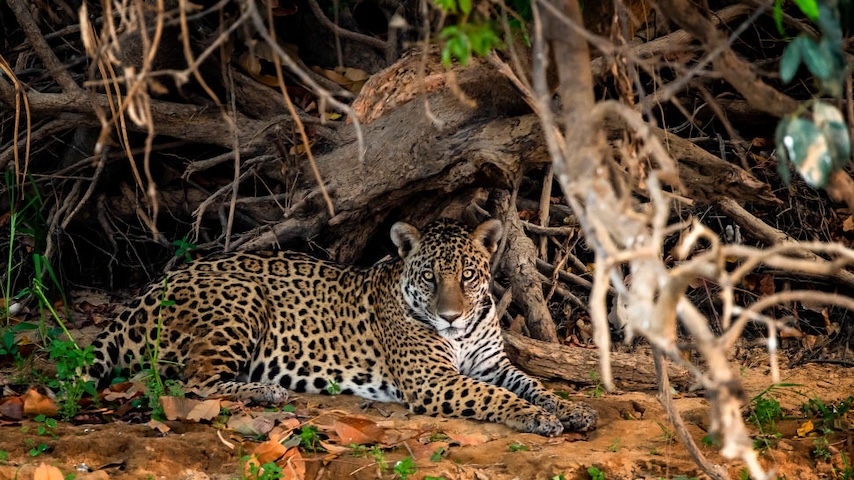Climate Change-Juiced Wildfires Are Only the Latest Threat to the World’s Biggest Wetland
Photo by Buda Mendes/Getty Images
The world’s biggest tropical wetland is on fire. Recent reporting about the Pantanal fires from the New York Times and elsewhere is simply devastating — dead and charred jaguar cubs, swaths of pristine habitat destroyed, animals from giant anteaters to tapirs and everything in between scrambling to escape flames that have already burned a New Jersey-sized chunk of the Missouri-sized wetland. And more is likely on the way.
The rainy season in this portion of Brazil, Bolivia, and Paraguay is likely the only thing that will contain the fires — and that doesn’t start until October. And of course, seasons in the Pantanal, like everywhere else, aren’t what they used to be. The region is getting hotter, and drier — in the 1980s and 1990s, the Pantanal routinely received 60 to 70 inches of rain each year. This century, that number fell to more like 50 inches, and over the last few years, rainfall totals well below that have been recorded.
This particular fire season specifically has climate change to blame. A recent World Weather Attribution study found that the fires in the Pantanal in June, which kickstarted this devastating season, were four to five times more likely thanks to human-induced warming. With the 1.2 degrees C of warming the world has experienced so far, June’s fires were about a one-in-35-year event; if the world fails to meet its Paris Agreement targets and passes 2 degrees C of warming, that will become a one-in-17-year event. There is so only so much the biodiversity hotspot can handle.
Meanwhile, the Pantanal is facing other kinds of human pressures that had already put its thousands of plants and animals at risk. A plan is in the works to reshape the Paraguay River, which runs through the region, into an industrial shipping waterway for soya beans, sugar, and other commodities. Proponents say that will reduce prices in North America and Europe; critics say it will devastate the region.
“It seems a high price to pay: destroying the Pantanal, one of the world’s unique systems, to reduce the price of grain,” Carolina Joana da Silva, a professor at Mato Grosso State University, told The Guardian earlier this month. The plan would involve straightening some curvier portions of river, widespread dredging, and building of multiple ports along the river’s length. Roads would be needed to access those ports. Chunks of wetland would by necessity turn into something else. All of this activity would likely increase the risk of yet more, and more devastating, wildfire.
In January of this year, dozens of scientists published a paper arguing against the project. “[T]he success of the navigation project is doubtful, whereas enormous environmental, cultural, and social impacts can be anticipated,” they wrote in the journal Science of the Total Environment. The paper’s lead author, Karl Wantzen, of the University of Tours and a Unesco scientist, explained his reasoning for the argument earlier this month: “I wanted to gather people to spell out what the current situation is. It would be a senseless tragedy.”
From fire and bulldozer, the Pantanal’s peril has never been clearer. And losing it would truly mean losing a one-of-a-kind place: to date, scientists have catalogued 380 species of fish, 580 different birds, and thousands of plants, many unique to the region. It is perhaps the most critical jaguar habitat on the planet; as of early this week, the fires were approaching a smaller area where more of the charismatic cats live than anywhere on earth, as many as eight to each 40 square-mile block.
Enderson Barreto, director of Response Group for Animals in Disasters, which is working in the Pantanal, told the Times that the already-enormous animal death toll is likely to rise in the coming days and weeks. “We’re really nervous watching this unfold,” he said. “The outlook is not good.”